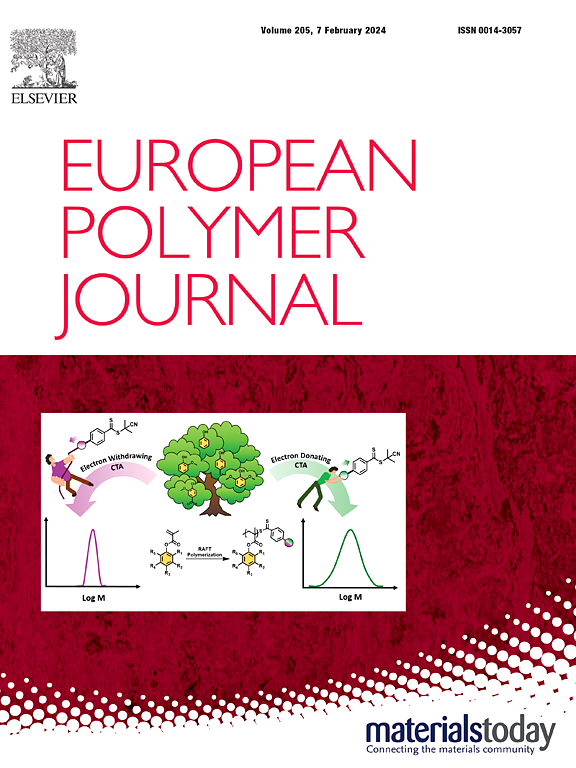Solvent polarity-mediated seeded swelling photo-initiated polymerization: Controlled preparation of Janus particles
IF 5.8
2区 化学
Q1 POLYMER SCIENCE
引用次数: 0
Abstract
Traditional seeded emulsion polymerization is flexible and effective, but is time-consuming and labor-intensive. Therefore, developing simple and time-saving synthesis strategies still requires continuous exploration. Herein, solvent polarity-mediated seeded swelling photo-initiated polymerization strategy was proposed, which could realize rapid preparation of Janus particles. Additionally, by controlling the polarity of solvent (porogenic agent), it is possible to simultaneously prepare three types of Janus particles with both asymmetric morphology and chemical environment (dual Janus particles), with only structural asymmetry, or with only chemical environment asymmetry. Interestingly, when alkane alcohols were applied as polar solvents, increasing the carbon chain length (which gradually decreases polarity) results in a transition in particle morphology from spherical particles to Janus particles with only chemical environmental asymmetry, and then to dual Janus particles. However, when benzene series were utilized as non-polar solvent, the particles morphology changed from spherical particles to Janus particles with only structural asymmetry as the number of methyl groups on the benzene ring increases. Additionally, these particles can be easily modified to create amphiphilic particles, which have broad application prospects in emulsifying oil–water mixtures.

求助全文
约1分钟内获得全文
求助全文
来源期刊

European Polymer Journal
化学-高分子科学
CiteScore
9.90
自引率
10.00%
发文量
691
审稿时长
23 days
期刊介绍:
European Polymer Journal is dedicated to publishing work on fundamental and applied polymer chemistry and macromolecular materials. The journal covers all aspects of polymer synthesis, including polymerization mechanisms and chemical functional transformations, with a focus on novel polymers and the relationships between molecular structure and polymer properties. In addition, we welcome submissions on bio-based or renewable polymers, stimuli-responsive systems and polymer bio-hybrids. European Polymer Journal also publishes research on the biomedical application of polymers, including drug delivery and regenerative medicine. The main scope is covered but not limited to the following core research areas:
Polymer synthesis and functionalization
• Novel synthetic routes for polymerization, functional modification, controlled/living polymerization and precision polymers.
Stimuli-responsive polymers
• Including shape memory and self-healing polymers.
Supramolecular polymers and self-assembly
• Molecular recognition and higher order polymer structures.
Renewable and sustainable polymers
• Bio-based, biodegradable and anti-microbial polymers and polymeric bio-nanocomposites.
Polymers at interfaces and surfaces
• Chemistry and engineering of surfaces with biological relevance, including patterning, antifouling polymers and polymers for membrane applications.
Biomedical applications and nanomedicine
• Polymers for regenerative medicine, drug delivery molecular release and gene therapy
The scope of European Polymer Journal no longer includes Polymer Physics.
 求助内容:
求助内容: 应助结果提醒方式:
应助结果提醒方式:


